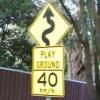Pulling The Fuse To Make Rwd
Announcements
-
Similar Content
-
Latest Posts
-
Murray has the right idea! Or just pretend you're a tow truck driver, they drive around as if it's a race track. Pads will be bedded in in no time! Or you'll arrive at an accident scene quickly...
-
You know what? I reckon you're on to something.
-
By Murray_Calavera · Posted
Sounds like doing a track day will resolve all your issues. -
The rotors only have about 5k on them so I didn't worry about the machining.
-
Also, if you didn't machine or replace rotors, it will make it harder to bed the new pads properly. It is something I'll advised to do. And yes, I've done it many times before, and will likely do it again, so no judgement here if you didn't replace or machine the rotors.
-








Recommended Posts
Create an account or sign in to comment
You need to be a member in order to leave a comment
Create an account
Sign up for a new account in our community. It's easy!
Register a new accountSign in
Already have an account? Sign in here.
Sign In Now